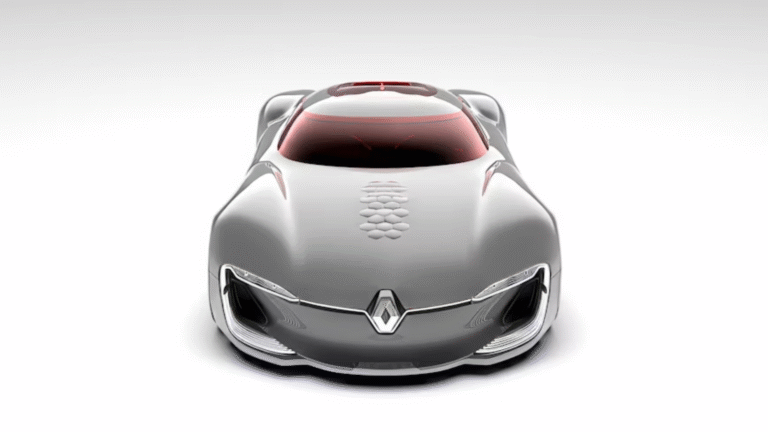Electric vehicle (EV) concept cars give us more than a glimpse of what’s to come — they let us feel the future today. From futuristic interiors to AI-powered driving experiences, these machines are rolling testbeds for the innovations that will shape the next decade of driving. But what’s it actually like to sit in, start up, and drive one?
We spoke to test drivers, engineers, and industry insiders to get an up-close look at what piloting an EV concept car really involves — and how it compares to your average EV today.
—
Table of Contents
- What Exactly Is an EV Concept Car?
- The First Impression: Design That Feels Like Sci-Fi
- Driving Experience: From Silent Power to Smart Controls
- Inside the Cabin: Screens, AI, and Sustainable Luxury
- Limitations: What Concept Cars Can’t (Yet) Do
- Real Examples: EV Concepts Already on the Road
- How Concept Cars Shape Production Models
- Conclusion
—
1. What Exactly Is an EV Concept Car?
Concept cars are experimental vehicles built to showcase future design directions, technologies, or brand visions. They often feature cutting-edge hardware and software — some of which may never make it to market. In the EV space, concept cars are particularly important because they:
- Highlight new battery, motor, and platform capabilities
- Preview autonomous driving features
- Push the envelope on sustainability and materials
- Explore radical new designs inside and out
Driving one is less about performance stats and more about experiencing what might soon be possible.
—
2. The First Impression: Design That Feels Like Sci-Fi
Step up to an EV concept car, and the first thing you’ll notice is the design — often futuristic, minimalist, and unbound by today’s regulations. Many feature:
- Butterfly or gullwing doors
- Seamless LED lighting signatures
- Glass roofs or canopy-style windshields
- Cameras instead of side mirrors
- Wheels that look like they belong in a Marvel movie
Even before you drive it, the car feels like stepping into a time machine.
—
3. Driving Experience: From Silent Power to Smart Controls
Behind the wheel, expect a surprisingly smooth experience. While not all concept cars are fully drivable, those that are often feature:
- Instant torque and whisper-quiet acceleration
- Brake-by-wire and steer-by-wire systems
- Advanced driver assist or limited autonomous modes
- Gesture-based or voice-command controls instead of physical buttons
The sensation is more “pilot” than “driver,” and it can take a minute to adjust — especially when the dash is a wraparound screen and the steering wheel folds away in autonomous mode.
—
4. Inside the Cabin: Screens, AI, and Sustainable Luxury
The interiors of EV concept cars aren’t just luxurious — they’re often experimental showcases in their own right. Expect:
- Dashboard-wide OLED displays or holographic projections
- Sustainable materials like cactus leather, bamboo, or recycled plastics
- AI co-drivers that adapt to your mood, preferences, and schedule
- Seat configurations that rotate, recline, or disappear in autonomous mode
Everything is streamlined, ambient-lit, and designed to feel like a lounge more than a cockpit.
—
5. Limitations: What Concept Cars Can’t (Yet) Do
While thrilling to experience, most concept cars have real-world limitations:
- Limited range or low-capacity prototype batteries
- Speed caps due to software restrictions
- Fragile bodywork not meant for mass production
- Features that violate current road regulations (like no mirrors or steering wheels)
In many cases, you’re driving under close supervision, on a test track, or in “demo mode” where only some functions are enabled.
—
6. Real Examples: EV Concepts Already on the Road
Some concept cars that have been test-driven or previewed in Australia or internationally include:
- BMW i Vision Dee — With color-changing paint and AI-powered personality
- Mercedes-Benz Vision EQXX — With a record-breaking 1,000+ km range
- Hyundai Prophecy — A design-forward look at the Ioniq 6 before it became real
- Audi A6 e-tron Concept — Merging performance, luxury, and future lighting tech
- BYD Ocean-X — Showcasing the next-gen Chinese EV design philosophy
These cars are being toured at motor shows, tech expos, and even track events to gather feedback and build excitement.
—
7. How Concept Cars Shape Production Models
While 90% of what you see in a concept may not make it to production, the core ideas often do. Concept cars influence:
- Next-gen dashboards and infotainment designs
- Battery placement and architecture strategies
- Use of eco-materials in mass-market vehicles
- Lighting, wheels, and digital interfaces
- Brand design language and visual identity
Today’s outlandish concept could be tomorrow’s showroom model — albeit a little toned down for practicality and cost.
—
8. Conclusion
Driving an EV concept car is a rare thrill. It’s not about specs or lap times — it’s about possibility. Whether it’s the AI that talks back to you, the spaceship-like cabin, or the eerie silence of gliding forward on electric power, the experience is unforgettable.
While most Aussies won’t get behind the wheel of one soon, the best parts of these cars are already trickling into the vehicles we’ll drive over the next five years.
—
Step into the future: What’s it like to drive an EV concept car? From AI cabins to silent power, we explore the surreal experience behind the wheel.
